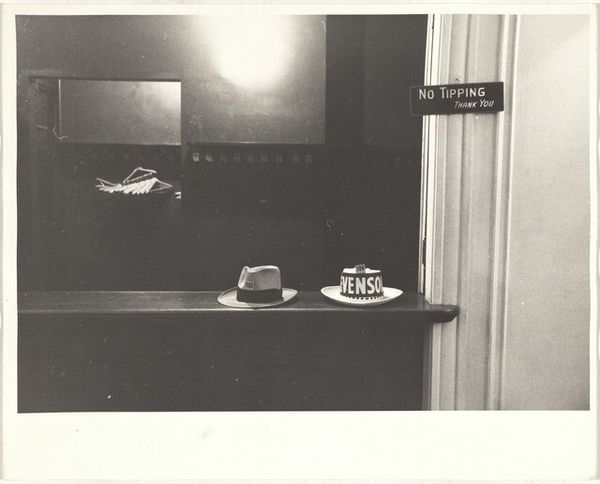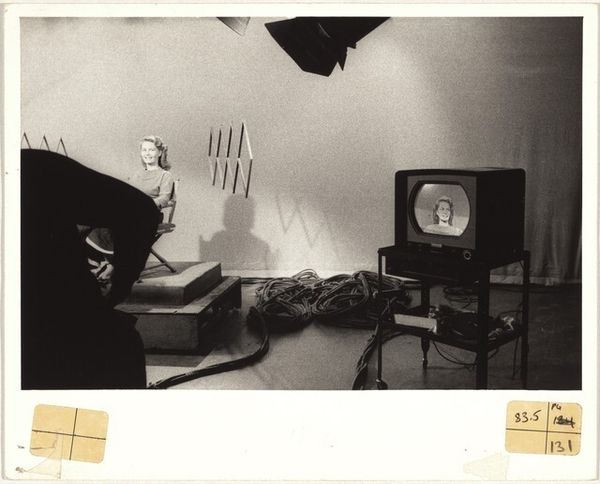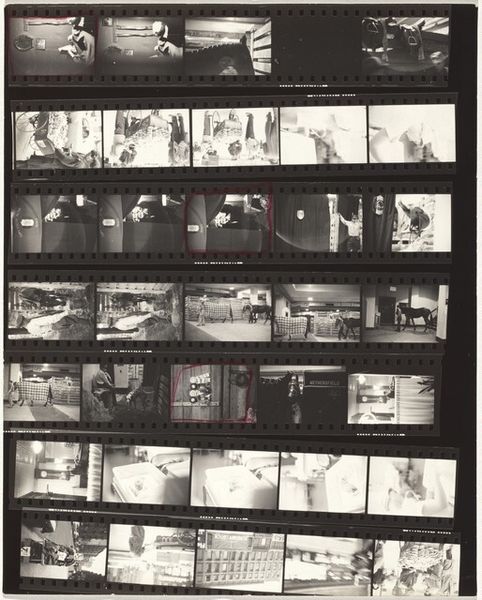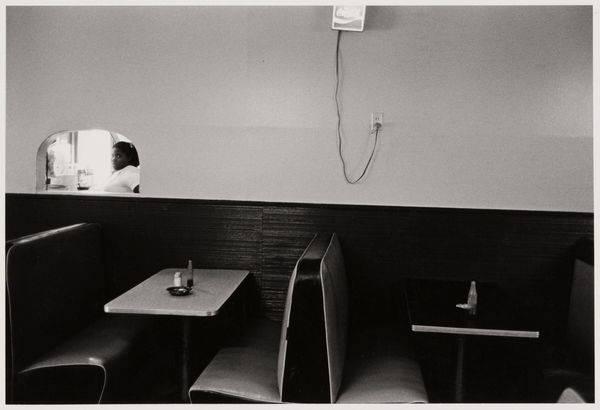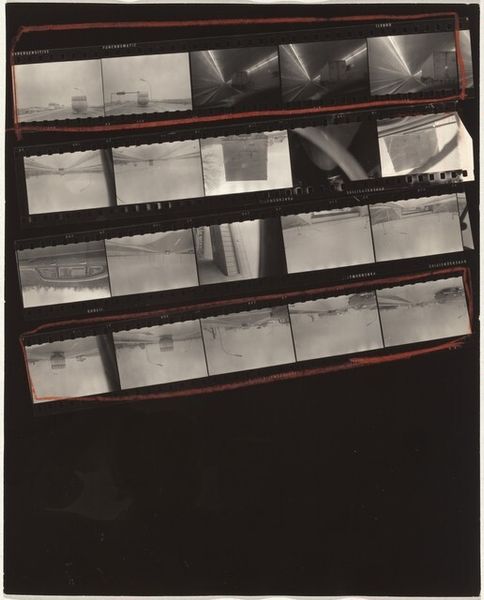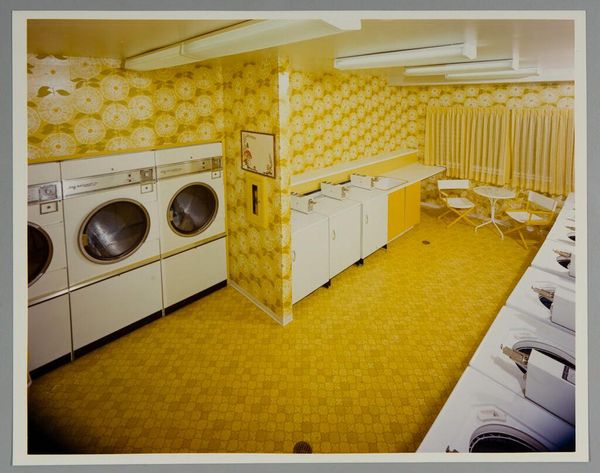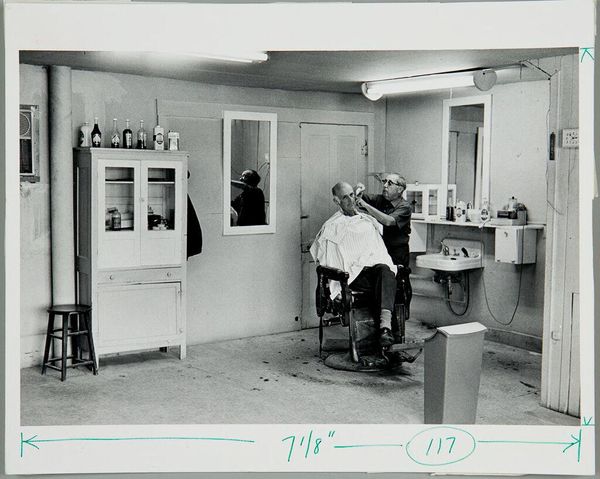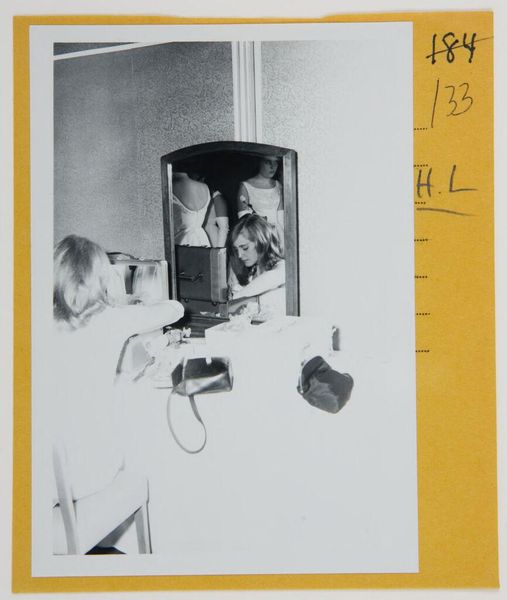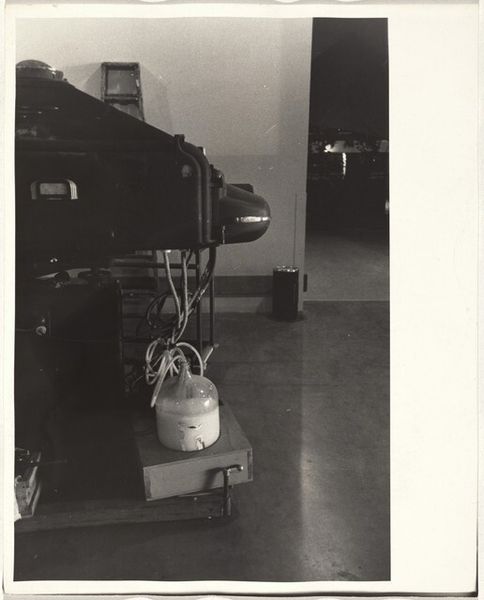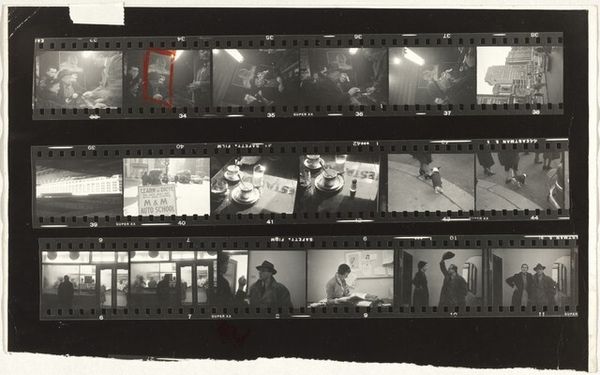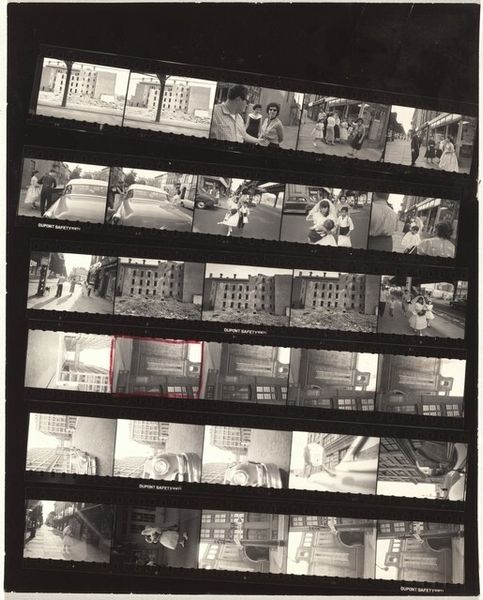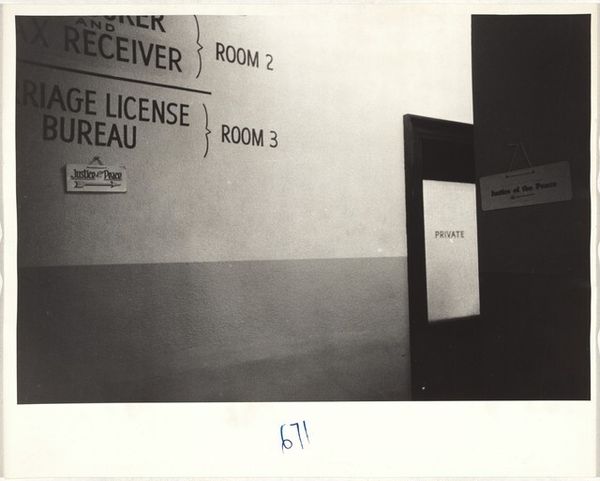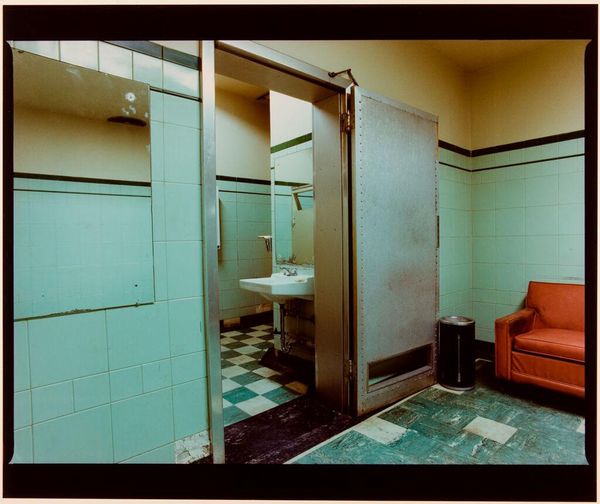
print, photography, gelatin-silver-print
street-photography
photography
gelatin-silver-print
pop-art
genre-painting
modernism
realism
Dimensions: image: 15 x 23.9 cm (5 7/8 x 9 7/16 in.) sheet: 20.4 x 25.3 cm (8 1/16 x 9 15/16 in.)
Copyright: National Gallery of Art: CC0 1.0
Curator: What an intriguing tableau of everyday life. Robert Frank’s 1955 gelatin silver print, "Men's room, railway station—Memphis, Tennessee" delivers such a potent message. Editor: My initial response is the oppressive banality. The endless row of identical urinals creates a rigid, almost suffocating geometry. Curator: Exactly. The composition leads the eye to the row, but also to the service worker. Consider the cultural weight of who occupies this space, the performative element involved in what should be a mundane activity, now memorialized and exposed. Editor: There’s a striking contrast. The horizontality of the urinals versus the vertical emphasis with the attendant and patron shoe shine position and the man on the throne position, not a single man looking forward, away. Even the dark and white palette—stark, uncompromising. Curator: And consider what the men's room historically represents—a liminal space, coded with masculinity, labor, race—a brief respite, yet often fraught. It becomes a stage for the social dynamics of the time. A social commentary on the South and segregation in America. Editor: I’m fixated by Frank’s compositional rigor. The geometric regularity establishes the tone but note how this order then isolates both of the human figures, highlighting their occupation and defining a specific class disparity. The lines of grout lead to the patron, yet their placement obscures them in shadow and equipment. Curator: That's a brilliant observation. The contrast serves to highlight the quiet dehumanization inherent within those spaces and socio-economic dynamics. It underscores Frank’s critical eye on mid-century American society. Editor: It makes you question what it is about capturing such raw and utilitarian architecture that can hold such powerful symbolism? It all makes you really ponder and re-contextualize everyday experience in the present-day moment. Curator: Absolutely. It pushes us to reconsider the stories etched within seemingly ordinary places. Places such as this can function as powerful reminders.
Comments
No comments
Be the first to comment and join the conversation on the ultimate creative platform.
